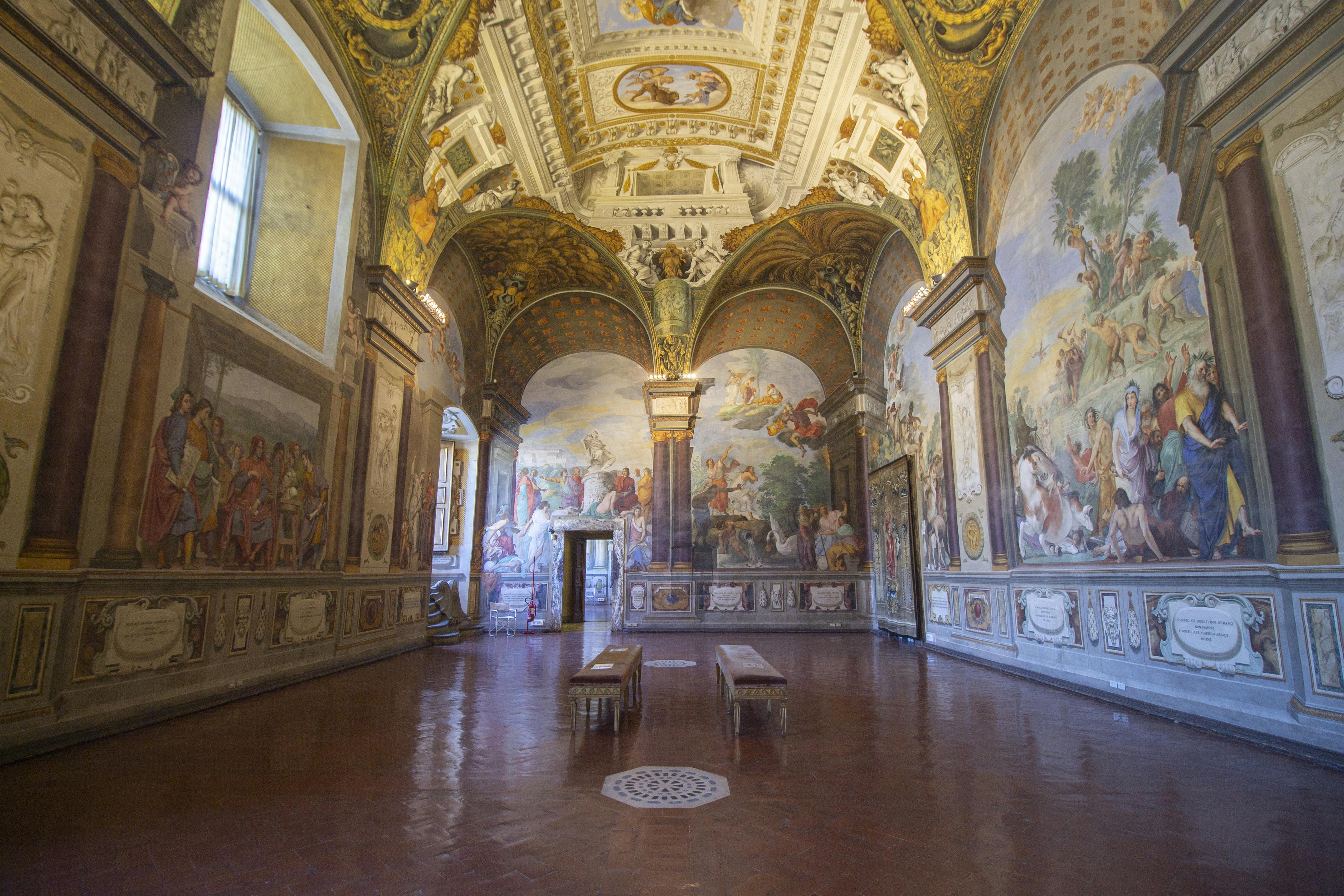History | Treasury of the Grand Dukes | Pitti Palace
The Treasury of the Grand Dukes (formerly known as the Silver Museu) is located on the ground and mezzanine floors of Pitti Palace, and occupies the rooms of the Medici’s summer apartment, entirely frescoed on the occasion of the marriage between Ferdinando II de’ Medici and Vittoria della Rovere (1637). It houses the precious “Medici’s Treasure”: tables and furniture with semi-precious stone inlays, rock crystals, a collection of ivories and ambers, objects of exotic art and the jewels of the Electress Palatine, the last Medici heir.
The Treasury of the Grand Dukes (formerly known as the Silver Museum) is located on the ground and mezzanine floors of Pitti Palace, and occupies the rooms of the Medici’s summer apartment, entirely frescoed on the occasion of the marriage between Ferdinando II de’ Medici and Vittoria della Rovere. The Museum houses the grand ducal treasures consisting of jewellery, vases, plates and other furnishings in gold, silver, precious and semi-precious stones, ivory and amber. Among the many objects that reflect the splendour of the court there are vases which belonged to Lorenzo the Magnificent and the bizarrely shaped Mannerist vases of the end of the 16th century, the 16th-century jewels which belonged to Anna Maria Luisa (the last descendant of the Medici, ancient and Renaissance cameos and the “Treasure of Salzburg” brought to Florence by Grand Duke of Tuscany Ferdinand III in 1815. An important collection of jewellery, made between the 17th and 20th centuries by prestigious European and Italian craftsmen is on display. There is also a large section dedicated to contemporary jewellery, reflecting the vitality of this historic museum and including important donations by prestigious noble families, collectors and goldsmiths. The collection of antique oriental and European porcelain and majolica, inspired by Asian models, enriches the already important collection of Chinese and Japanese porcelains, begun by the Medici dynasty in the 15th century.
